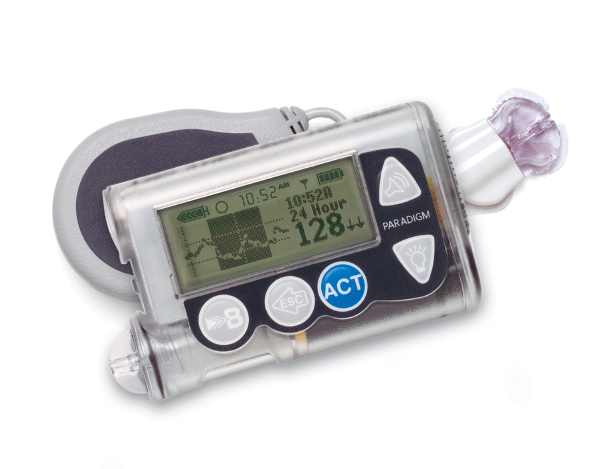
The Medicines and Healthcare Products Regulatory Agency (MHRA) just issued a Medical Device Alert on Medtronic Inc.’s Paradigm ambulatory insulin infusion pumps. The MHRA is a government agency in the United Kingdom that is responsible to ensure drugs and medical devices are safe and effective and is similar to the U.S. Food and Drug Administration […]
 The Medicines and Healthcare Products Regulatory Agency (MHRA) just issued a Medical Device Alert on Medtronic Inc.’s Paradigm ambulatory insulin infusion pumps.
The Medicines and Healthcare Products Regulatory Agency (MHRA) just issued a Medical Device Alert on Medtronic Inc.’s Paradigm ambulatory insulin infusion pumps.
The MHRA is a government agency in the United Kingdom that is responsible to ensure drugs and medical devices are safe and effective and is similar to the U.S. Food and Drug Administration (FDA).
The recalled Medtronic Paradigm ambulatory insulin infusion pumps include models: MMT- 511, 512, 712, 712E, 515, 715, 522, 522K, 722, 722K, 523, 523K, 723, 723K, 554, and 754.
According to the American Diabetes Association, insulin pumps are small, computerized medical devices that deliver insulin in two ways—either in a steady measured and continuous dose, known as the “basal” insulin, or as a surge, or “bolus” dose, which is made at the user’s direction, typically at mealtime. Doses are delivered through a flexible plastic tube known as a catheter. Using a small needle, the catheter is inserted through the skin into the fatty tissue and is taped in place. The pump does not replace the need to monitor blood glucose levels, but may help some patients achieve increased control over their sugar levels.
The MHRA alert, dated May 29, 2014, is being taken over a risk of hypoglycemia due to incorrect selection and delivery of the bolus amount. Medtronic has received reports of users accidentally programming the pump to deliver the maximum bolus amount.
Hypoglycemia is a condition that occurs when glucose levels drop below 70 mg/dL. When blood glucose levels drop below this amount, patients may experience serious harm.
The MHRA indicated that medical personnel and patients receive a copy of Medtronic’s “Field Safety Notice” (FSN) dated March 2014. The MHRA also indicated that the recommendations in the Medtronic FSN document be followed. In particular, when using Medtronic’s Paradigm ambulatory insulin infusion pump:


